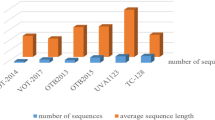Abstract
This paper describes a model, and algorithms based on it, for the analysis of pedestrian interactions in outdoor scenes. Pedestrian activities are described by their trajectories in the scene, and we wish to know if they were independently generated or if they are correlated. Two models are considered: (i) a model based on multiple velocity fields recently proposed in Nascimento et al. (IEEE Trans Image Process 22(5):1712–1725, 2013) and (ii) an interaction model based on the attraction/repulsion between pairs of pedestrians. Several combinations of these models are studied and evaluated. An estimation method based on a moving horizon optimization of a quadratic cost functional is proposed. Experimental results with synthetic data and real video data are presented to assess the performance of the algorithms.




Similar content being viewed by others
References
Aggarwal, J.K., Ryoo, M.S.: Human activity analysis: a review. ACM Comput. Surv. (CSUR) Surv. Homepage Arch. 43(3) (2011)
Turaga, P., Subrahmanian, R., Subrahmanian, V., Udrea, O.: Machine recognition of human activities: a survey. IEEE Trans. Circuits Syst. Video Technol. 18(11), 1473–1488 (2008)
Oliver, N., Rosario, B., Pentland, A.: A bayesian computer vision system for modeling human interactions. IEEE Trans. Pattern Anal. Mach. Intell. 22(8), 831–843 (2000)
Suk, H.-I., Jain, A., Lee, S.-W.: A network of dynamic probabilistic models for human interaction analysis. IEEE Trans. Circuits Syst. Video Technol. 21(7), 932–945 (2011)
Ntalampiras, S., Arsic, D., Hofmann, M., Andersson, M., Ganchev, T.: PROMETHEUS: Heterogeneous Sensor Database in Support of Human Behavioral Patterns in Unrestricted Environments. Signal, Image and Video Processing. Springer (2012)
Mahbub, U., Imtiaz, H., Ahad, A.R.: Action recognition based on statistical analysis from clustered flow vectors. Signal, Image and Video Processing. Springer (2013)
Nascimento, J., Figueiredo, M.A.T., Marques, J.: Activity recognition using mixture of vector fields. IEEE Trans. Image Process. 22(5), 1712–1725 (2013)
Nascimento, J., Marques, J., Figueiredo, M.A.T.: Classification of complex pedestrian activities from trajectories. IEEE International Conference Image Processing, pp. 3481–3484 (2010)
Helbing, D.: A mathematical model for the behavior of pedestrians. Behav. Sci. 36, 298–310 (1991)
Helbing, D., Molnar, P.: Social force model for pedestrian dynamics. Phys. Rev. E 51, 4282–4286 (1995)
Mehran, R., Oyama, A., Shah, M.: Abnormal crowd behavior detection using social force model. In: IEEE International Conf. on Computer Vision and Pattern Recognition, pp. 935–942 (2009)
Zhang, Y., Qin, L., Yao, H., Huang, Q.: Abnormal crowd behavior detection based on social attribute-aware force model. In: IEEE Internatinal Conference Image Processing, pp. 2689–2692 (2012)
Henderson, L.F.: On the fluid mechanic of human crowd motions. Transp. Res. 8, 509–515 (1974)
Okazaki, S.: A study of pedestrian movement in architectural space, part 1: pedestrian movement by the application on of magnetic models. Trans. A.I.J 283, 111–119 (1979)
Luber, M., Stork, J., Tipaldi, G., Arras, K.O.: People tracking with human motion predictions from social forces. In: IEEE Conference on ICRA, pp. 464–469 (2010)
Liu, X., Chua, C.: Multi-agent activity recognition using observation decomposed hidden markov models. Image Vis. Comput. 24, 166–175 (2006)
Alessandri, A., Baglietto, M., Battistelli, G.: Moving-horizon state estimation for non-linear discrete-time systems: new stability results and approximation schemes. Automatica 44, 1753–1765 (2008)
Veenman, C.J., Reinders, M.J.T., Backer, E.: Resolving motion correspondence for densely moving points. IEEE Trans. Pattern Anal. Mach. Intell. 23, 54–72 (2001)
Acknowledgments
This work was supported by FCT in the framework of contract PTDC/EEA-CRO/098550/2008, PEst-OE/ EEI/LA0009/2013, and PEst-OE/EEI/LA0021/2013.
Author information
Authors and Affiliations
Corresponding author
Rights and permissions
About this article
Cite this article
Portelo, A., Figueiredo, M.A.T., Lemos, J.M. et al. Moving horizon estimation of pedestrian interactions using multiple velocity fields. SIViP 9, 1669–1677 (2015). https://doi.org/10.1007/s11760-014-0620-0
Received:
Revised:
Accepted:
Published:
Issue Date:
DOI: https://doi.org/10.1007/s11760-014-0620-0




